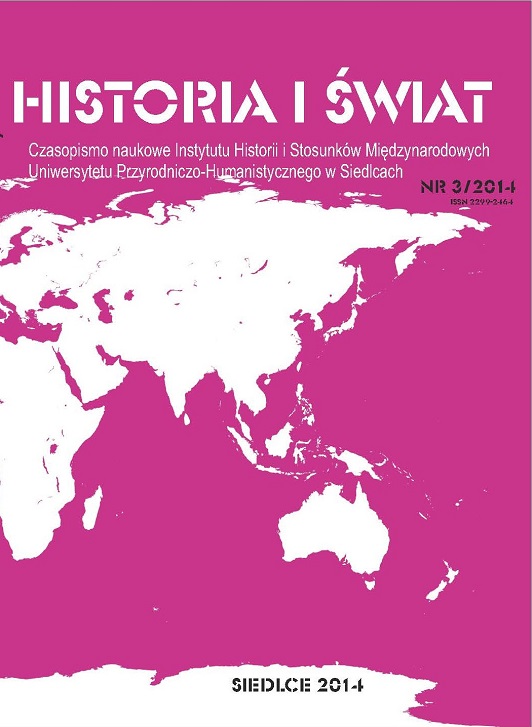Sasanian horse armor
DOI:
https://doi.org/10.34739/his.2014.03.03Słowa kluczowe:
History, Archaeology, Iran, Late Antiquity, relief, army, Sasanian EmpireAbstrakt
The goal of the paper is to define general types and the evolution of horse armor employed by elite warriors of Sasanian Iran, basing on literary sources and iconographical evidence with minor reference to archaeological finds in wider Eurasian perspective. The horse armor was an important part of cavalry equipment already in the chariot warfare however its re-emergence in mounted combat occurred when heavy cavalry was developed. The article divides Sasanian horse armor into several groups: 1. One-piece body protection, which overall cover mounts body the way modern horse blankets do. Within the group one may find following subgroups: 1.a Caparisons – known from numerous works of art (rock reliefs illustrating scenes of mounted combat at Firusbad and Nakš e Rostam as well as the on so-called Shapur cameo currently held in Louvre) having long Near Eastern and Eurasian tradition. 1.b Scale barding – which in fact is a sort of caparison covered with metallic scales sewn onto textile horse blanket, testified by literary sources, known from archaeological evidence from Dura Europos (despite the fact that these examples belonged to Roman cavalry, it is clear that they were fashioned in Iranian manner). Scale bardings of the type are known also from the works of art like graffito from Dura Europos, Trajan’s column, sculpture of Khalchayan and late Parthian Tang e Sarvak frieze. 1.c Chain mail horse armor – lacking strong and direct evidence from Sasanian period, iconography which may depict horses protected with chain-mail is rather crude however despite hypothetical nature, this sort of horse armor is very likely employed in Sasanian warfare. 2. Bardings composed of multiple elements and fragmentary bardings covering a part of the mount. Again these this group can be divided into two sub-groups: 2.a Full lamellar/laminar barding – can be identified on the sculpture of Khalchayan and late Parthian frieze Tang e Sarvak as well as on the seals of Late Sasanian spahbedan. They find numerous Central Asian (Old Turkic) and Far Eastern refernces. 2.b Fragmentary barding, best known from Taq e Bostan sculpture of an equestrian figure but with Central Asian, Chinese and Byzantine references. Following phases of barding development in ancient and early mediaeval Iran can be determined: 1. Late Achaemenid when armored cavalry required some protection for horses after employing shock tactics and subsequent close combat. 2. Mid Parthian, influenced by invasions of the steppe dwellers initiated by Xiong Nu expansion. Developed locally later. 3. Late Sasanian – resulting from contacts with Turkic warriors who transmitted some Eastern military technologies to Iran and through Avar influence to Europe.
Pobrania
Pobrania
Opublikowane
Numer
Dział
Licencja
Prawa autorskie (c) 2014 Historia i Świat

Utwór dostępny jest na licencji Creative Commons Uznanie autorstwa – Bez utworów zależnych 4.0 Międzynarodowe.




